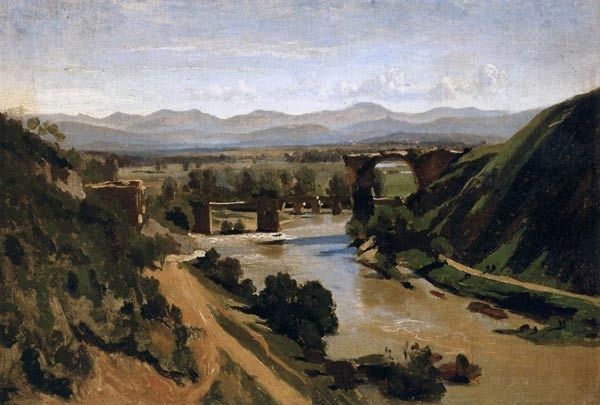
In this series, noted painter Joseph McGurl discusses plein air paintings by past masters that he finds instructive or inspiring. This week: Corot’s “The Bridge at Narni.”
In this sketch by Corot, we are drawn into the composition as our eye follows diagonal lines along the river into the distant mountains. We are aided in this journey by Corot’s use of atmospheric perspective. Compare the dark warm tree and earth tones in the foreground with the increasingly pale and cool colors as the landscape moves off into the distance. Corot also carefully observed the changing colors of the river. The angle at which he viewed the surface of the river became more obtuse the further it was from his eye. This changing angle altered the way he perceived the water’s transparency and reflectiveness. In the foreground, he could see into the semi-transparent water and detect its muddiness and the river bottom. However, as the water moved into the distance, the increasingly obtuse angle at which he viewed it caused the reflective qualities to predominate, and the distant water reflected more of the blueness of the sky. As seen in the painting, this change in the river’s tone and color also helps to create the illusion of space and depth, which becomes the true subject of this plein air gem.




